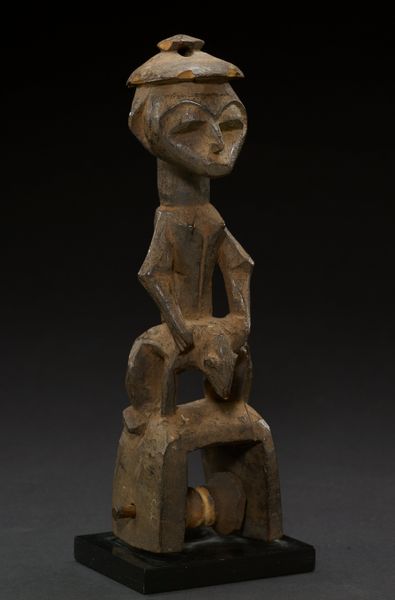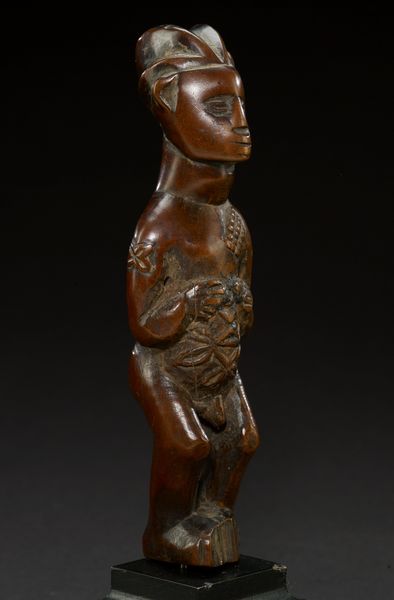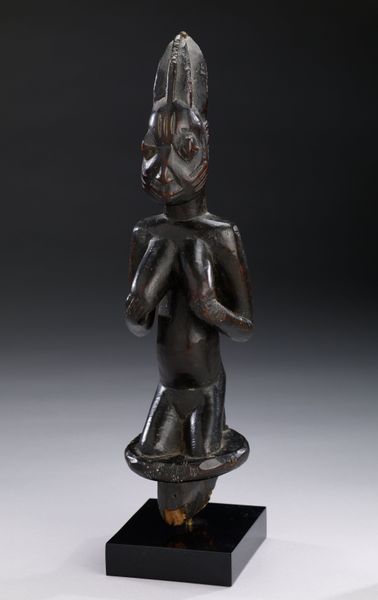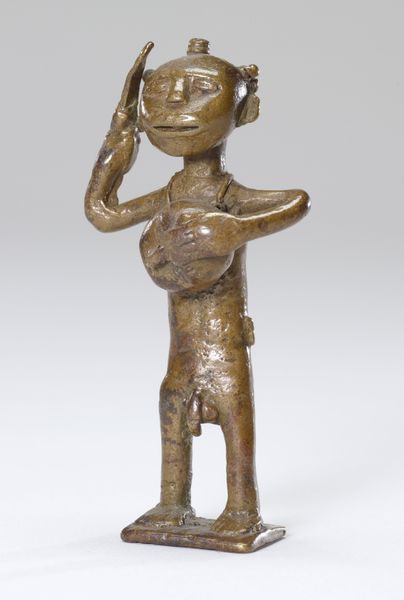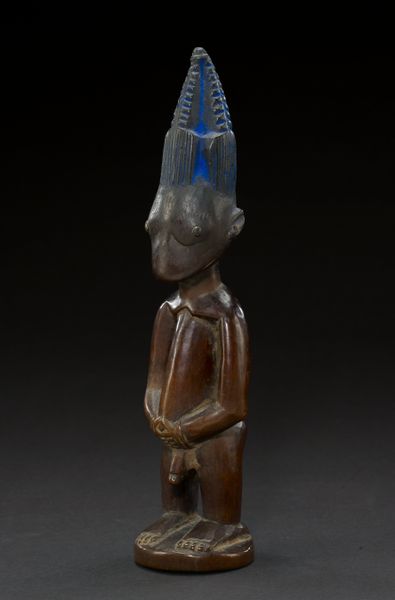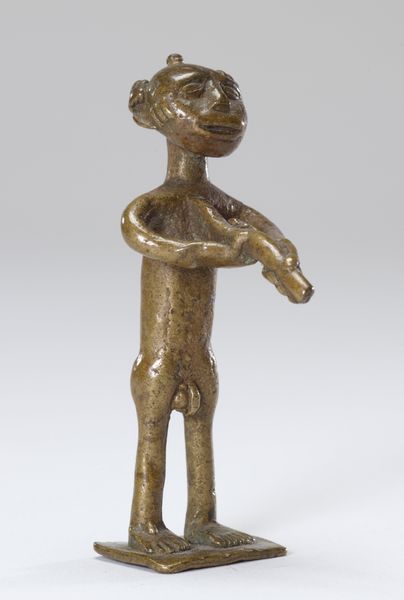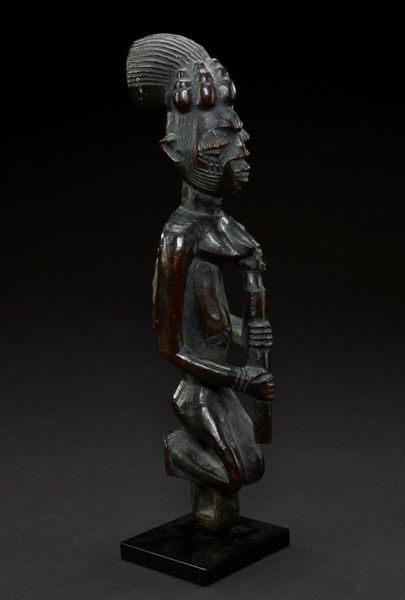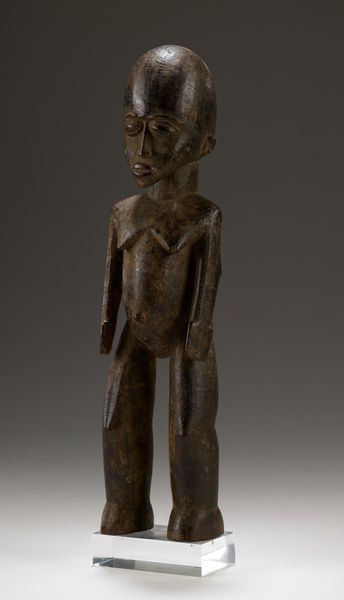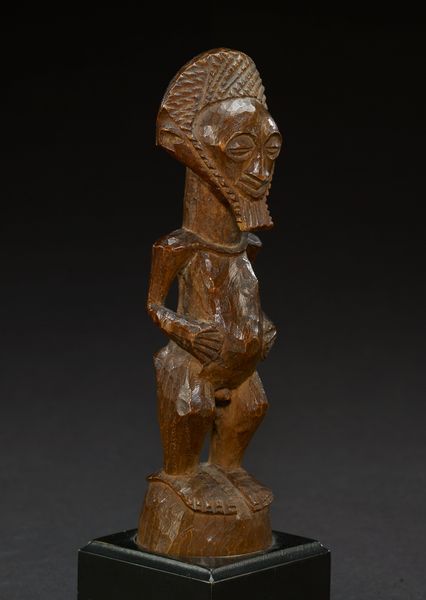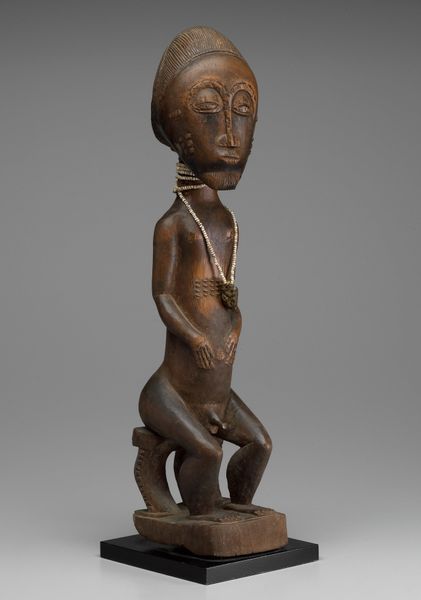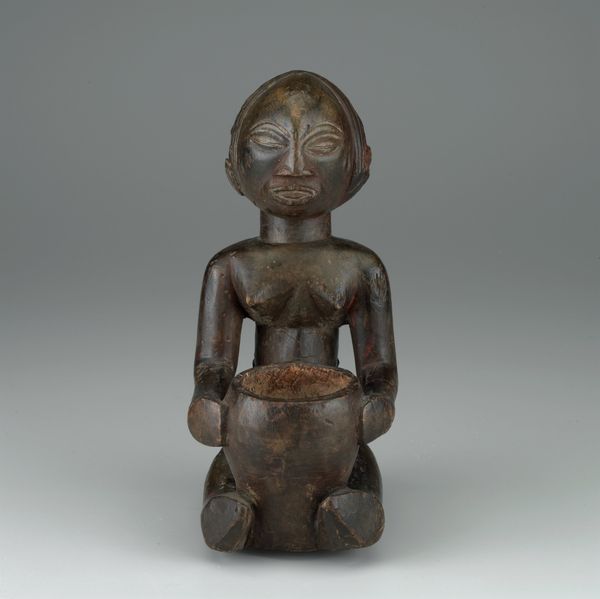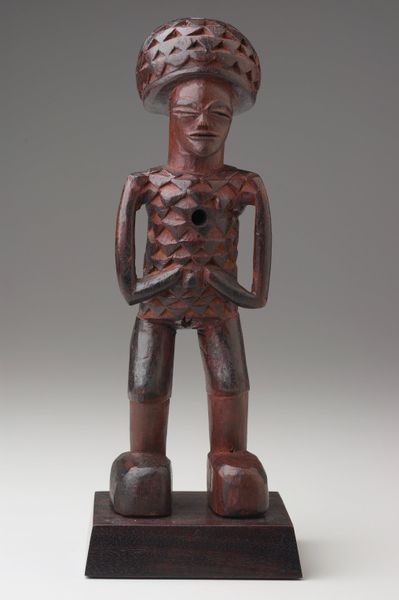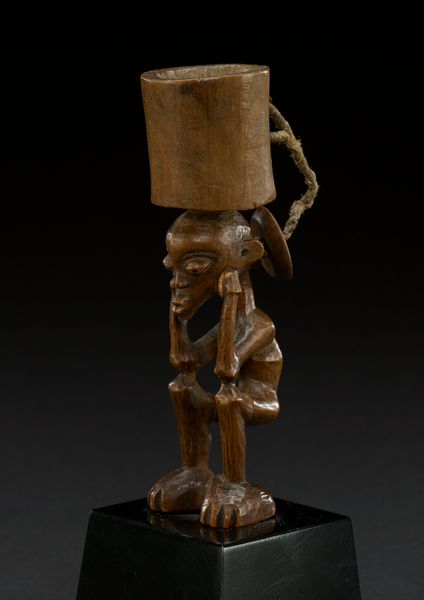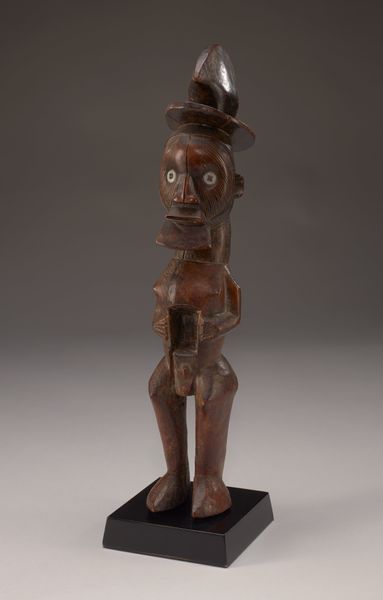
sculpture, wood
#
portrait
#
african-art
#
stone
#
sculpture
#
figuration
#
sculpture
#
wood
Dimensions: 6 1/4 × 2 × 2 in. (15.88 × 5.08 × 5.08 cm) (with base)
Copyright: Public Domain
Curator: Ah, I'm immediately struck by the way this sculpture seems to cradle its own vulnerability. It's a 'Half Figure,' dating from the early 20th century. It is located here at the Minneapolis Institute of Art. It's carved from wood and appears to draw influence from the African art movement. Editor: You're right, there’s an almost melancholic grace to it. Those slightly downcast eyes, that small smile that doesn't quite reach... I see a quiet strength in its restraint. It's compelling in its modesty. The wood grain almost feels like it's echoing the contours of skin. Curator: That texture is key. Wooden sculpture throughout much of the Congo, and specifically amongst the Luba peoples, is deeply linked to ancestor veneration. Think of wood not just as a material, but a vessel carrying spiritual weight. Those lines etched into the figure represent cultural memory, echoing ancestral lines and community connections. The figure carries more than its physical form; it's weighted with narratives, histories, beliefs, you see? Editor: Absolutely. The smoothness of the face versus the more roughly hewn body. It’s a transition, a revealing, of both humanity and… what’s the word… presence. I am also interested in the eyes themselves. It’s an iconic motif to render eyes shut – signaling the journey within, a closing off from exterior stimuli in favor of inward contemplation. Curator: That internal focus you describe is paramount. These figures, were often kept, rubbed with oils, and served as points of contact, mediating spiritual transitions in various ways – they stood at boundaries of existence, past and present, spiritual and corporeal. The gloss would signal not only ritual handling, but how these sculptural objects acted like historical memory triggers and sites of ritual actions and ancestral address. Editor: It brings the figure to life. What do you make of its…simplicity? There are details, but they are suggestive and rendered with almost a lack of adornment. It seems essential somehow. Curator: Reduction can often lead to potency. By paring away extraneous detail, emphasis falls on what truly signifies—essence. The sculpture isn't just beautiful; it functions as an emblem and symbol imbued with cultural authority and the ability to link generations through shared spiritual understandings. Editor: In that way, it does invite us to complete the picture—to feel the continuity of story. I can feel the warmth. And that is a testament to its capacity. It’s less an object and more a… touchstone. Curator: Precisely! A touchstone – resonating still.
Comments
No comments
Be the first to comment and join the conversation on the ultimate creative platform.
